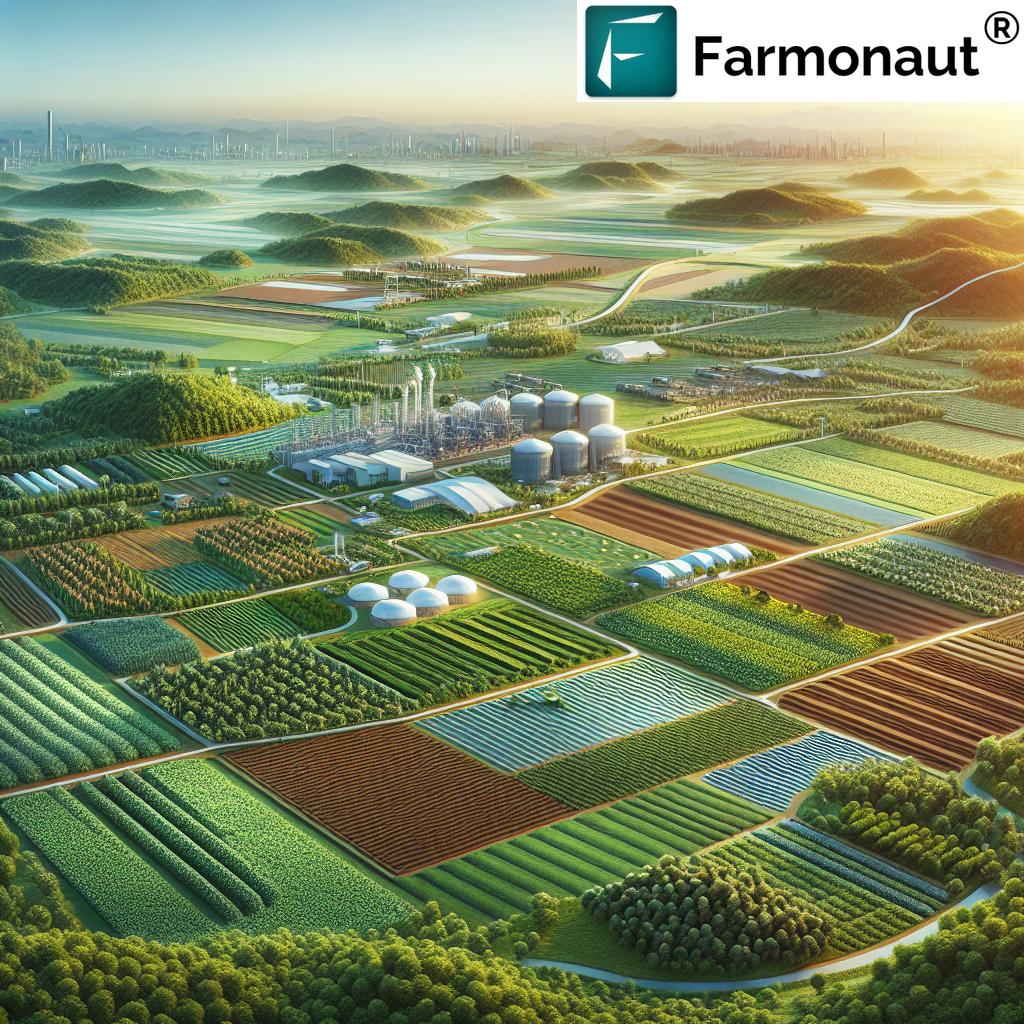Adoption of Technology in Indian Agriculture: 2025 Trends
Summary: Adoption of Technology in Indian Agriculture—Paving the Way for a Sustainable Future in 2025
Adoption of Technology in Indian Agriculture stands at a turning point as we enter 2025. Agriculture remains the backbone of the Indian economy, supporting the livelihood of nearly half the population. However, issues like small landholdings, fragmented markets, erratic weather patterns, and limited access to modern knowledge have historically constrained productivity and profitability.
Over recent years, the adoption of technology in Indian agriculture has emerged as a vital pathway to overcoming these hurdles—driving growth, enhancing food security, and aligning with broader goals of sustainability. Today, the technological landscape encompasses digital tools, precision inputs, mechanization, biotechnology, and training modules. The shift is transformative and inclusive, with technology adoption training, smart digital platforms, and locally adapted solutions reaching farmers at every scale.
In this comprehensive guide, we explore the current state, emerging trends, key technologies, decisive factors for success, and the sustainable future being shaped through ongoing innovation.
“By 2025, over 65% of Indian farmers are expected to use digital tools for crop management and monitoring.”
Current State of Technology Adoption in Indian Agriculture
The adoption of technology in Indian agriculture is moving forward, yet the rate of uptake varies greatly. While some large, commercial farms swiftly integrate advanced digital platforms, IoT sensors, and precision farming machinery, the majority of India’s small and marginal farmers still lag, primarily due to factors such as limited access, awareness, education, inclusion, finances, and infrastructure.
The technological landscape in Indian farming now encompasses a diversity of tools, such as:
- Basic mechanization (tractors, seeders)
- Advanced sensors and remote sensing (satellite imagery, drones)
- Digital advisory/mobile apps for market, crop, and weather intelligence
- Biotechnological advances in improved seed varieties
Several government reports, PDSs, and technology adoption in agriculture manuals emphasize the dualistic nature of adoption. Larger operations and well-resourced regions tend to adopt swiftly, but marginal farmers, particularly in rural and resource-poor states, often remain behind.
The uneven rate of adoption is influenced by:
- Educational opportunities—limited awareness and limited knowledge restrict access.
- Financial inclusion—cost barriers limit adoption of modern tools.
- Fragmented landholdings—small, scattered fields challenge mechanization and digital oversight.
- Infrastructure—rural power, internet, and logistics still pose obstacles for modern platforms.
Despite these hurdles, recent years have seen growing momentum through government schemes, private initiatives, and digital outreach to empower more farmers. Notably, a strong demand for actionable, mobile-friendly training and affordable solutions is driving a broader, more inclusive scope for technology adoption in 2025 and beyond.
Key Technology Adoption Trends in Indian Agriculture: 2024 vs. 2025 (Estimated)
| Technology/Practice | Purpose/Benefit | Adoption Rate % (2024, est.) | Projected Adoption Rate % (2025, est.) | Impact on Sustainability |
|---|---|---|---|---|
| Precision Farming | Optimizes input (water, fertilizer, pesticides) use, increases yield | 17% | 24% | High: Reduces environmental impact, boosts resource efficiency |
| Drones & Remote Sensing | Efficient crop monitoring, early disease/stress detection | 13% | 21% | Very High: Prevents crop loss, minimizes chemical use |
| Mobile Advisory Platforms | Provides real-time advice on weather, pests, market, and best practices | 38% | 65% | High: Increases knowledge, quick adoption, broad reach |
| IoT Sensors | Continuously monitors soil, water, and climate parameters | 9% | 17% | High: Precise water use, soil protection, data-driven farming |
| AI-based Solutions | Automated crop stress analysis, predictive analytics | 6% | 12% | Medium-High: Smarter predictions, optimized yields |
*2025 figures are projections based on current growth rates and government/private initiatives.
Emerging Technologies Revolutionizing Indian Agriculture
The adoption of new technology in agriculture is accelerating in India, especially for solutions designed to be affordable, scalable, and accessible—even to smallholders. Here’s how 2025’s digital and precision trends are reshaping the sector.
1. Precision Agriculture & IoT: From Field Data to Increased Productivity
Precision agriculture harnesses data from multiple sources—drones, GPS-enabled tractors, soil sensors, and remote stations—to optimize every step of crop management. The use of IoT devices (Internet of Things) generates real-time data streams enabling farmers to reduce fertilizers, pesticides, and water waste while targeting the right amount of input per plant or field zone.
By 2025, affordable IoT sensors are being made accessible via private initiatives and government schemes in rural India, with usage expanding quickly to even smallholder farmers.
- Automated soil moisture monitoring triggers timely irrigation.
- Real-time crop and weather advisory for smart risk management.
- Active monitoring reduces environmental impact and increases farm profitability.
Farmers in India are leveraging remote-sensing tools like satellites and drones not only for monitoring but also for targeting crop inputs and predicting disease/pest outbreaks.
2. Digital Platforms & Mobile Applications: Empowering the Indian Farmer
Mobile devices are the gateway for millions of Indian farmers to adoption of technology in agriculture. Modern apps offer:
- Localized weather forecasts and alert services
- Market price tracking
- Crop and pest advisory with AI-powered chatbots
- Digital access to downloadable PDFs, manuals, and technology adoption guides
The impact is massive: from simple SMS-based alerts to comprehensive, app-based agriculture advisory platforms—reaching 65% of Indian farmers by 2025.
3. Mechanization & Modern Farm Equipment: Bridging the Labor Gap
Mechanization is vital for increasing farm productivity, especially as rural labor availability fluctuates. Key innovations include:
- Mini-tractors designed for small landholdings
- Solar-powered irrigation pumps & machinery
- Automated seed drills, harvesters, and threshers—versatile for Indian field sizes
Crucially, recent years have seen affordable, shared equipment initiatives—making advanced farm equipment reachable for even the poorest farmers.
4. Biotechnology & Improved Seed Varieties: Resilience for a Changing Climate
Agricultural biotechnology in India is fostering the development of seed varieties that are:
- High-yielding and short-duration (critical where weather patterns are erratic)
- Drought and flood-tolerant for climate resilience
- Pest- and disease-resistant—thereby reducing chemical usage
The adoption of new technology in agriculture PDF reports from public and private research emphasize widespread distribution of these seed varieties as essential for a sustainable future.
5. Environmental Impact Monitoring, Traceability & Resource Management
With the need for sustainability and compliance growing, digital tools now support:
- Environmental impact monitoring (e.g., carbon footprinting, as explained on our Carbon Footprinting page)—offering Indian farming visibility on their emissions and helping align with global ESG practices.
- Blockchain-based traceability—providing transparent, secure records for agricultural produce across the supply chain. Learn about agricultural traceability at Product Traceability by Farmonaut.
- AI-driven resource and fleet management—enabling large and small farms to optimize logistics and inputs. Fleet management details are at Farmonaut Fleet Management.
Such technologies are increasingly vital for Indian crop insurance, loans, and sustainability goals in 2025.
The Role of Technology Adoption Training in Agriculture
Bridging the gap between technology availability and successful usage is the challenge of education. Technology adoption training in agriculture is now delivered through:
- In-person and digital workshops, often provided as downloadable PDSs/manuals and e-learning modules
- SMS/call-center advisory services for personalized guidance
- Community demonstration farms promoting experiential learning
- Integration of technology use training in rural extension services
These interventions are supported by government agencies, NGOs, and private sector-driven models to ensure small and marginal farmers participate in the digital revolution.
Specific focus on technology adoption design in agriculture has meant adapting training to local dialects, cultural contexts, and visual/interactive platforms to make content more relatable and impactful.
Designing Technology Adoption for Indian Agriculture
Effective technology adoption design in Indian agriculture hinges on creating solutions that are:
- Affordable: Low-cost sensors, open-access mobile apps, pay-as-you-go farm services
- Culturally and linguistically appropriate: Tools in regional dialects, visual content for semi-literate populations
- Modular and scalable: Can be used for small and large-scale farming, extensible to other rural sectors
Farmers’ involvement is at the center of design strategies, ensuring relevance, usability, and swift grassroots adoption.
- Financial inclusion via affordable loans and crop insurance makes technology adoption less risky.
- Government schemes such as input subsidies and training grants further incentivize adoption for marginal and small farmers.
This approach aligns policies, platforms, and local realities, so technology adoption becomes the norm, not the exception.
Challenges to Technology Adoption & The Way Forward
While technology adoption in Indian agriculture has accelerated, major challenges persist including:
- Rural infrastructure deficits: Patchy internet connectivity, unreliable power supply, and logistical hurdles weaken the full potential of digital platforms.
- Sociocultural barriers: Gender inequality, language diversity, and land tenure insecurity limit accessibility for marginalized groups.
- Financial limitations: Many farmers still lack the financial inclusion or collateral needed for upgrades/investments.
- Awareness and training gaps: Despite the existence of adoption of technology in agriculture PDFs/manuals, many farmers are unaware or lack digital skills for usage.
The solution? Holistic policies and multi-stakeholder engagement. Policies need to integrate technology adoption with market reforms, infrastructure development, credit/insurance access, and climate-smart agriculture initiatives.
“Precision agriculture techniques are projected to cover 30 million hectares of Indian farmland by 2025.”
How Farmonaut Drives Agriculture Technology Adoption
As a leading provider of satellite-based solutions for agriculture, we at Farmonaut are committed to making advanced technology affordable and accessible for Indian agriculture. Our mission directly supports mass adoption of technology in agriculture by offering:
- Satellite-based crop monitoring for farms of any size—with actionable real-time insights on vegetation health (NDVI), soil moisture, and crop stress
- AI-driven weather forecasts and tailored strategy recommendations for farmers via the Jeevn AI Advisory System
- Blockchain traceability—creating transparent and secure supply chains for Indian agriculture
- Fleet and resource management tools—helping optimize logistics and reduce operating costs for even small farm enterprises
- Environmental impact analytics—empowering farmers and agribusinesses to meet sustainability goals and reporting requirements
Solutions are delivered through easy-to-use Android, iOS, and web apps (see download links above), and are also accessible via our robust Satellite Insights API and API for Developers.
Our users—ranging from small farmers to government agencies—gain a competitive edge through high-tech, data-driven insights without expensive on-ground hardware or complex setups.
Farmonaut Products: Enhancing Indian Agriculture
Here’s how some of our core solutions and platforms address the emerging needs for 2025:
-
Real-Time Crop Monitoring (Web & Mobile App): Monitor health, detect stress or disease outbreaks early, and optimize practices—even for small landholding farmers.
Try the experience: Farmonaut Web & Mobile App -
Environmental Impact & Carbon Footprinting: Farmers and agri-businesses can measure their carbon output, helping them move towards more sustainable agriculture.
More details: Carbon Footprinting by Farmonaut -
Product Traceability: Blockchain-based traceability allows every stakeholder to track and verify produce—building trust and unlocking higher-value markets.
Learn more: Farmonaut Traceability -
Crop Loan and Insurance Support: Our satellite-based verification helps financial institutions and farmers get timely, accurate, and risk-free loan or insurance processing.
Details here: Farmonaut Crop Loans & Insurance -
Fleet Management: Remote tracking of agricultural machinery for efficient operations and reduced operational costs.
Find out more: Farmonaut Fleet Management -
Large-Scale Farm Management Dashboards: Specialized for agribusinesses or FPOs to coordinate activities across farms, monitor input use, and harvest results.
See options: Farmonaut Admin App
Subscribe to Farmonaut
Affordable subscription plans mean Indian farmers, businesses, and government agencies can harness powerful technology regardless of size or resource base:
Conclusion: The Digital Frontier & Sustainable Indian Farming
As Indian agriculture evolves in 2025, the adoption of technology is both the present and the future. With robust government and private sector initiatives,
affordable and accessible digital solutions, and a strong focus on technology adoption training, the path is firmly set towards achieving sustainable, competitive, and resilient agriculture in India.
The convergence of traditional wisdom and digital innovation is enabling the Indian farmer to overcome historic hurdles—whether it is through real-time satellite insights, smart farm equipment, or farmer-first extension services. Strengthening infrastructure, promoting financial inclusion, and investing in scalable, human-centered design will ensure technology reaches every level—from the smallest rural producer to the largest agribusiness.
Through proof-driven technologies and continuous capacity building, India’s rural future is being paved by digital adoption—transforming Indian agriculture into a beacon of sustainability for the world.
FAQs on Technology Adoption in Indian Agriculture
-
Q1. What is the main driver for adoption of technology in Indian agriculture?
The main drivers include the need to increase farm productivity, adapt to changing climate/weather, overcome labor shortages, and access better market opportunities—supported by government and private initiatives for technology dissemination and training. -
Q2. Are new digital and precision technologies affordable for small and marginal Indian farmers?
Yes, increasingly so. With government schemes, low-cost IoT devices, app-based advisory, and shared equipment models, affordability is improving. Farmonaut’s subscription-based platforms further reduce barriers to access. -
Q3. How does technology adoption training agriculture benefit rural India?
It equips farmers with practical digital skills, helps them use advisory platforms, increases farm profitability, and reduces risk from erratic weather or pest outbreaks. -
Q4. What are the most transformative technologies for Indian agriculture in 2025?
Precision agriculture, drones and satellite-based monitoring, AI-informed mobile platforms, and sustainable seed and mechanization innovations are the standout advances for 2025, driving broad adoption across rural India. -
Q5. How do traceability and environmental tools align with government policies?
Traceability and sustainability analytics help align with evolving Indian agricultural policies on food safety, carbon emissions, and market traceability, ensuring compliance and premium market access. -
Q6. Where can I access technology adoption in agriculture pdfs and manuals?
Many are available through government, agricultural university, and Farmonaut online platforms—either as direct downloads or integrated into mobile advisory apps. -
Q7. How does Farmonaut ensure solutions match the realities faced by Indian farmers?
We focus on affordability, regional language support, robust mobile/web platforms, and continuous training resources to address the specific needs of India’s diverse rural landscape.











